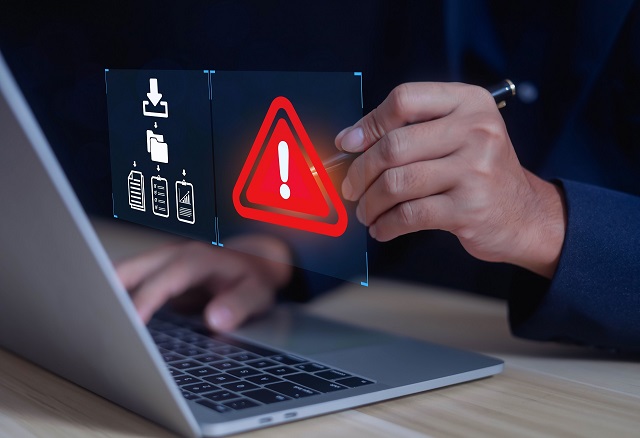Fortinet Acquires Next DLP Strengthens its Top-Tier Unified SASE Solution
Read the release
Modern IT environments require protection from a wide range of threats. While the media often focuses on cyberattacks initiated by external threat actors, insider threats may be even more dangerous to an organization. As such, companies need to protect themselves by developing and implementing a robust insider threat program.
This post looks at the process of building a robust insider threat program, and we’ll discuss how a data loss prevention (DLP) solution can be integral in protecting valuable company resources.
 |
An insider threat is one where an insider can use authorized access to do harm to an organization. This harm can come in the form of physical violence, theft, sabotage, espionage, accidental data loss or detrimental cyber acts. The level of privileged access insiders have to valuable information and resources raises the potential level of risk associated with these threats.
An insider threat program is a combination of activities and processes designed to protect a company from the threats initiated by entities within the organization. The program needs to incorporate training, policies, technology, and a mindset focused on eliminating the risks of insider threats.
 |
Insiders can be an organization’s employees or contractors brought on to fulfill a particular role. In both cases, the threats they represent are closely tied to the level of access they have to a company’s valuable IT resources. Greater individual access results in the potential for more damaging insider threats.
Two kinds of insider threats need to be considered when developing a program to mitigate the risk.
This type of threat involves deliberate, malicious activity taken by employees or contractors to steal, compromise, or corrupt data resources or IT systems. Intentional threats run the full gamut of possible harmful actions including physical violence, sabotage, and theft.
A deliberate insider may be a disgruntled employee or one who is taking extreme measures in an attempt to cope with to crippling financial obligations. A contractor or employee may be involved in industrial espionage and be attempting to steal intellectual property for a business competitor. Monitoring for potential risk indicators is key to identifying the potential for an insider threat.
Accidental insider threats come about due to negligence, mistakes, or unintentional activities that put company resources at risk. These types of threats typically do not involve violence or damage to IT systems or hardware.
They can, however, put valuable and sensitive data at risk through their actions, such as clicking on a malicious link in a phishing email or other social engineering attacks. In some respects, unintentional threats can be just as damaging as deliberate ones.
 |
An effective insider threat program contains the following five key elements. Taken together, they provide an organization with a viable method of minimizing the risks of insider attacks.
Implementing effective technological solutions is a crucial element of an insider threat program. Data loss prevention (DLP) software is a key technology in minimizing both deliberate and unintentional insider threats. A DLP solution can be instrumental in stopping the misuse of enterprise data in all cases.
The Reveal platform by Next is an advanced, cloud-native solution that can be implemented quickly and gives organizations the flexibility and visibility they need to effectively address insider threats.
Reveal employs next-gen agents powered by machine learning to identify and categorize data at the endpoint, identifies anomalous behavior, and can automatically take the necessary steps to ensure data is not mishandled.
Reveal also provides user training at the point of risk. When a user attempts to use resources for which they are not authorized, Reveal will restrict the activity and inform the individual of their mistake.
Talk to the experts at Next and schedule a demo to see how this cutting-edge data loss prevention platform can help your company minimize the risks of insider threats.
Insider threats are equally as dangerous as external threats and, in some cases, may have the potential to be more damaging.
The reason for this is the access that insiders have to valuable corporate resources. They can directly attack those systems by leveraging their privileged access, while external threat actors may struggle to gain the necessary level of access to pose the same level of risk.
Insider threat programs aim to proactively identify potential threats and develop comprehensive strategies to mitigate them. These programs are designed to detect and prevent malicious activities from individuals within an organization who have authorized access to sensitive information.
By implementing insider threat programs, organizations can effectively monitor and analyze employee behavior, identify potential indicators of insider threats, and respond promptly to mitigate any risks. Some common indicators of insider threats include unusual interest in classified information, unauthorized access to sensitive data, and abnormal behavior patterns.
Internal threats are hard to prevent because it is necessary to provide a subset of individuals with access to sensitive company resources. Without this access, business operations would grind to a halt.
Conversely, to prevent outsider threats, it is only necessary to construct an impenetrable defense that keeps adversaries out of the IT environment.
The Reveal platform provides users with pop-up messages that describe why a particular activity was prohibited. It then restricts the activity by taking an action, such as blocking the download of a sensitive file to an unauthorized device.
The instructive message tells the user why the action was denied and points them to the company’s data handling policy for more information.

Blog

Blog

Blog

Blog

Resources

Resources

Resources

Resources

